
How the Dutch are facing up to their colonial past
Rembrandt's magnificent full-length portraits of Oopjen Coppit and her husband Marten Soolmans are two of the most prized possessions in the Rijksmuseum in Amsterdam – the Netherlands' prestigious national arts and history museum. Dressed in elaborate finery and painted in a way only the richest could afford, the couple are the embodiment of the era of economic prosperity and artistic flourishing commonly referred to as "the Dutch Golden Age". But delve deeper and these portraits also tell a more complex and disturbing tale, for Soolmans derived his wealth from refining sugar produced by an enslaved workforce on plantations in Brazil.
For more than 250 years the Netherlands had extensive colonies in the regions that are now known as Indonesia, South Africa, Curaçao, New Guinea – and beyond – where enslaved men, women and children were treated as barely human. Too often thought of as something that was perpetrated by a minority overseas, a ground-breaking new exhibition at the Rijksmuseum reveals how slavery permeated every level of society, both in the colonies and on home soil, and left a legacy that still ripples through the country today.
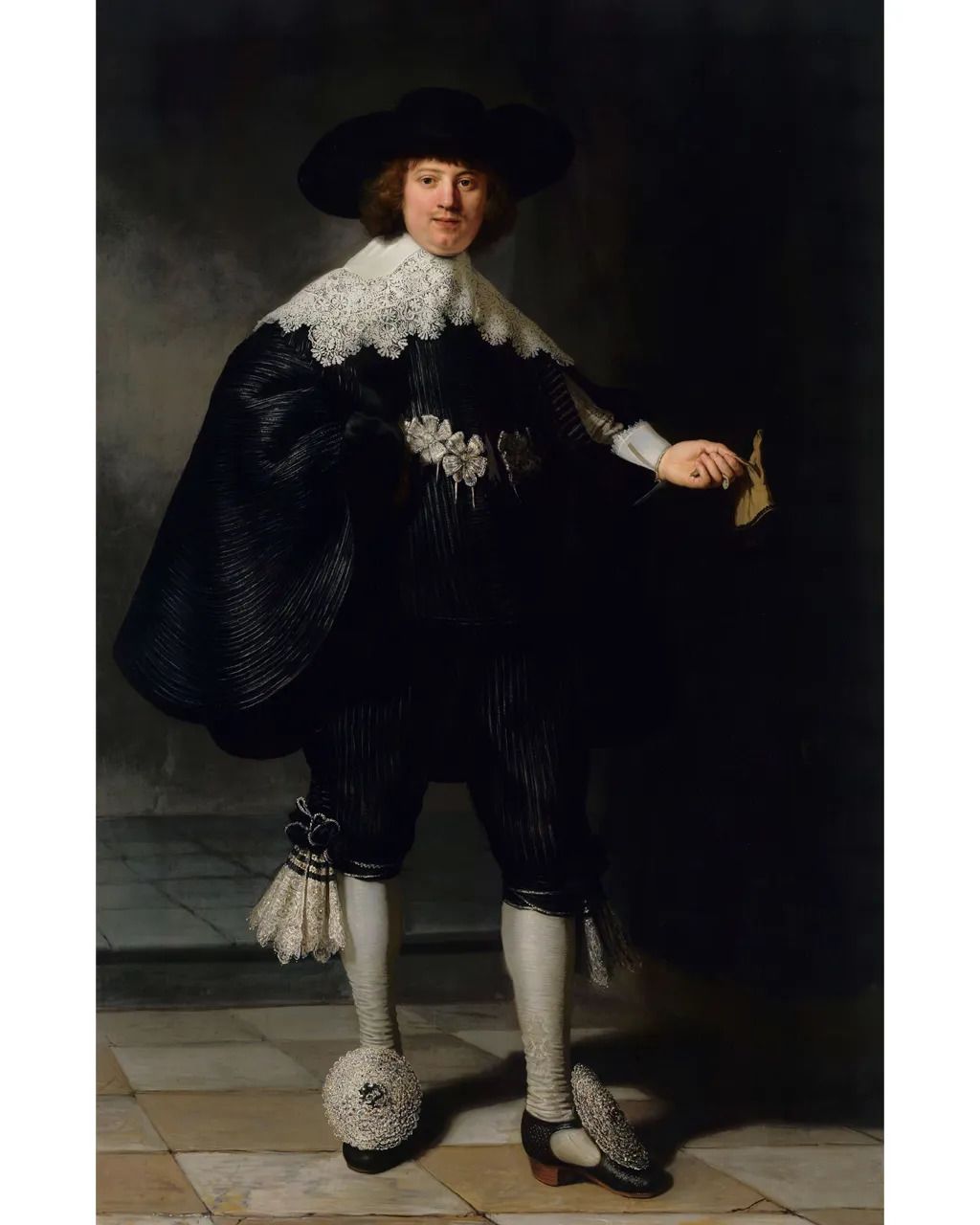 Marten Soolmans – whose portrait by Rembrandt is one of the
Rijksmuseum's most prized possessions – derived his wealth from enslaved
workforces in Brazil
Marten Soolmans – whose portrait by Rembrandt is one of the
Rijksmuseum's most prized possessions – derived his wealth from enslaved
workforces in Brazil
"It's not just the elite, it's also artisans that made a living as sub-contractors or suppliers, like blacksmiths or carpenters working on a shipping wharf, or a clerk making contracts. If you look at the whole chain, then it's far more interwoven in Dutch society than we used to say. I think it's important to tell our visitors that it's not only history that took place far away in the colonies, it's really our national history and involves us all," the Rijksmuseum's curator of history, Eveline Sint Nicolaas, tells BBC Culture.
The Protestant Dutch were initially reluctant to involve themselves in the slave trade with one pastor referring to it as a "popish aberration" perpetrated by the Spanish and Portuguese. However, attitudes began to shift as the Dutch expanded their operations overseas. "It became clear if we wanted to compete and take over from the Portuguese then the Dutch had to participate in the slave trade and that caused a shift in the message spread by the church," says Sint Nicolaas. "They looked for stories in the Bible to legitimise slavery, and argued that the Old Testament said that slavery was acceptable because of the story which saw Noah curse Ham's descendants into slavery," she explains. This was despite there being no explicit mention in the Bible of Ham being black. "It's such a complicated argument that I always find it hard to understand that it's possible… but only a few clergymen questioned it, and then you get the de-humanising of 'the other,'" says Sint Nicolaas.
Racism was borne out of colonialism, not the other way round – Valika Smeulders
"I think it's important to point out that racism is not something that always existed," says the Rijksmuseum's head of history, Valika Smeulders. "Discrimination is universal, but to legalise it as a system that a certain group of people was meant to serve the other half of the world, that is something that was installed by colonialism, and at the end of colonialism that was reinforced through 'scientific' racist ideas. Racism was borne out of colonialism, not the other way round."
Coming to terms with this history involves facing some uncomfortable truths for a nation that has long seen itself as tolerant, and the Rijksmuseum itself realises that it has been slow in telling these stories. "We thought there were no objects to tell this story and that was a large obstruction to starting with it," explains Sint Nicolaas.
A personal history
The exhibition was years in the planning and involved hiring new staff members with relevant professional as well as personal backgrounds. This includes Smeulders, who was born in Curaçao, and emigrated from the Netherlands to Suriname in 1976 when it had just gained independence. "My ancestors are European, African and Asian. They were enslavers, enslaved and labour migrants. This intricate colonial history has been embraced in the Caribbean at a faster pace than is happening in Europe, but we are now following suit," she says.
To do so, the museum decided to focus on the stories of individuals involved in the system – those who benefitted from it, suffered under it and ultimately rebelled against it. Concentrating on the social, rather than economic history of slavery was particularly important when it came to telling the stories of those who had been enslaved, "people with names and stories instead of being anonymous 'slaves' you find mentioned as 'cargo' in the archives," says Sint Nicolaas.
Direct testimonies from enslaved people are rare as reading and writing were banned in most colonies, so the team had to critically re-examine objects in their collection, carefully interpret contemporary written sources and use oral history in order to tell their stories. The acquisition of new objects including a "troncos", a foot restraint used to prevent escape, and a "kappa", a cast-iron kettle used on sugar plantations, helped make more tangible the experiences of those enslaved.
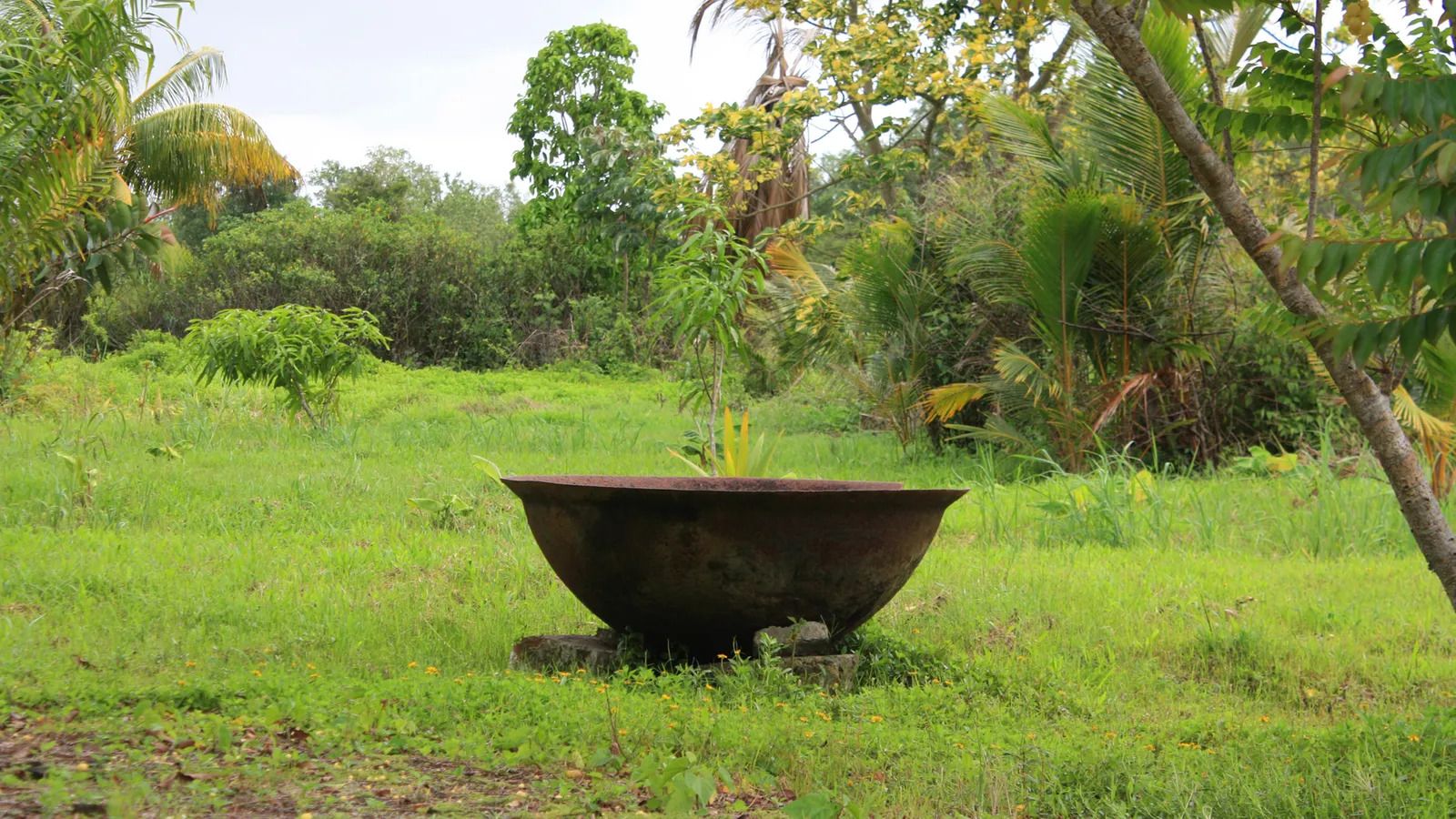 Objects such as a "kappa" (a cast-iron kettle) and a "troncos" (a foot
restraint) help make more tangible the experiences of the enslaved
Objects such as a "kappa" (a cast-iron kettle) and a "troncos" (a foot
restraint) help make more tangible the experiences of the enslaved
The kappa is linked to the story of Wally, an enslaved man who was forced to work on a sugar plantation in Suriname. Tensions escalated when a new owner took away the precious free Saturday – that enabled the workforce to socialise and cultivate their own crops – and insisted that a pass was needed to leave the plantation. Eventually the entire workforce fled en masse to the surrounding forest. When they were captured, 19 accomplices were pardoned, but the ringleaders, including Wally, were sentenced to appalling torture and a slow death. The horror of the story is undoubtedly made all the more visceral by its personal nature, and the knowledge that Wally and his comrades were treated so barbarically on the basis of a spurious religious argument tenuously created for economic gain.
As Marten Soolmans bought his raw sugar from a middleman, would he have known of the brutality of the system that produced it? The extent to which people in the Dutch Republic were aware of the abuses overseas is something Smeulders says needs to be studied more. "To begin with people would know things through family. Those from the higher classes who went to the colonies could see slavery for themselves, and ships' crews could see slavery close up, so people were not unaware of what was happening," she says.
Even if he and Oopjen hadn't known of the brutal reality of slavery they would certainly have been aware of a population that had escaped it, for they would have seen them on the way to Rembrandt's studio which was situated in an area with the highest black population in 17th Century Amsterdam. That there was a black population at all is likely to be surprising to many. Officially, slavery was illegal and didn't exist in the Dutch Republic, but that did not prevent people from buying enslaved people in the colonies, and bringing them back with them. A dark-skinned servant signalled membership of a select group with global influence.
One such man was likely to have been Paulus Maurus, whose story unfolds via a brass collar that can be traced back to the house he worked in. Originally catalogued as a dog collar when it entered the collection in 1881, the description was never critically examined despite similar collars being seen around the necks of servants of African origin in paintings. The museum now wonders whether it could have been worn by Paulus as collars of this type are frequently seen on young servants of African origin in paintings.
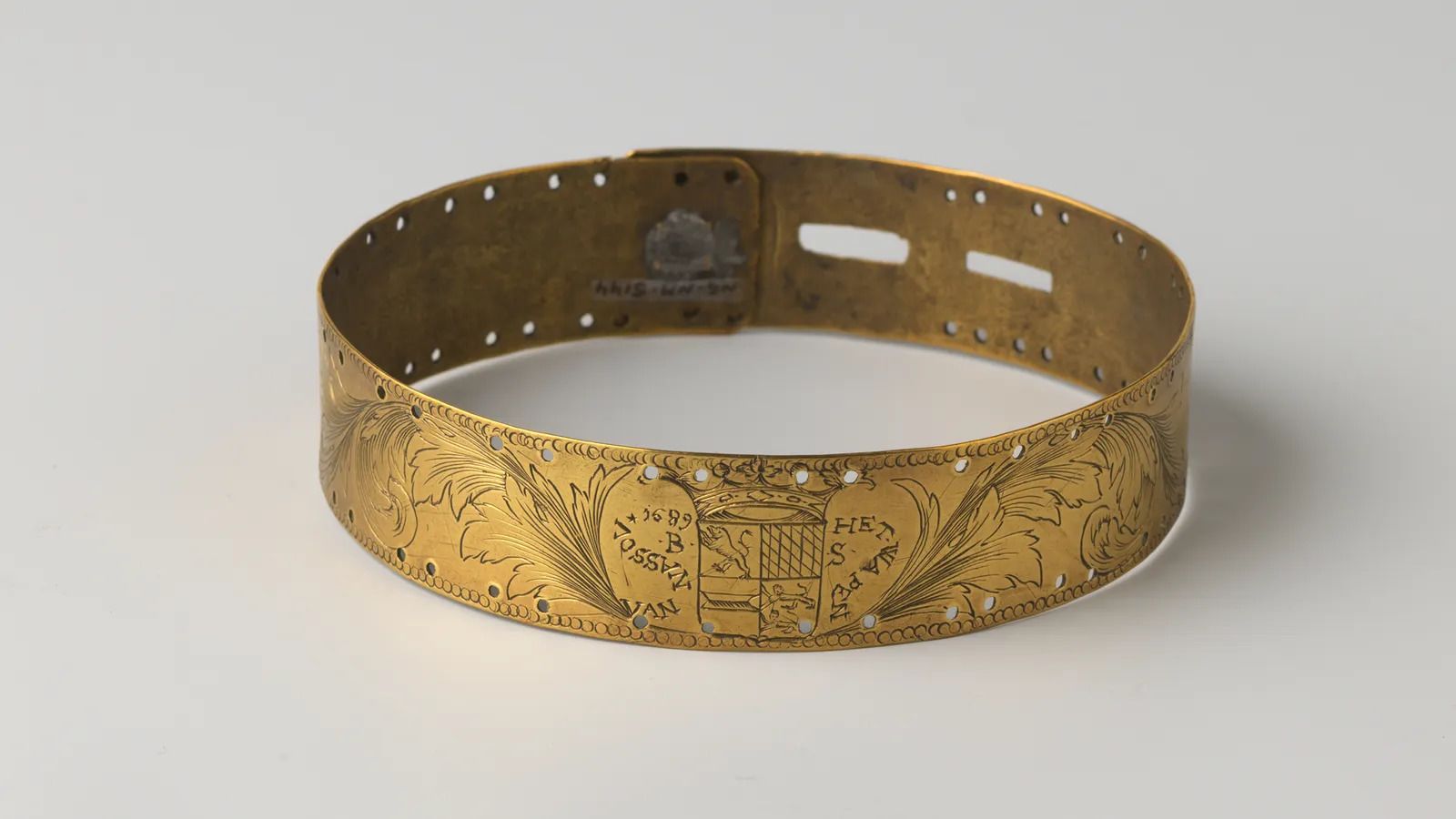 The story of Paulus Maurus unfolds via a brass collar that was originally catalogued in 1881 as a dog collar
The story of Paulus Maurus unfolds via a brass collar that was originally catalogued in 1881 as a dog collar
What would life have been like for a free black man in Dutch society? "It is a lot more complicated than we would think," says Smeulders. "They were accepted on the one hand, they had families and children… at the same time if you were a minority and you saw stereotypical depictions all around you it must have been very uncomfortable."
Paulus himself married and had children, and his descendants may well be living in Amsterdam today although are unlikely to know it. "After a few generations it was hardly visible that people had African DNA," says Smeulders. Black men usually married white women, another fact that is likely to surprise us, but there were no restrictions on interracial marriage at the time, and we can only assume prejudice was less prevalent among the less affluent classes. Smeulders wonders what the results would be if DNA samples were taken from a large selection of Dutch people. "What I'm mostly curious about is what it does to society once people realise they are personally related to both sides of the story," she says.
The view from the ship
Societal attitudes could well be changed if different areas of Dutch history were studied in more detail too. Historical accounts of the ending of slavery frequently give prominent roles to European abolitionists, but resistance fighters within the system are given far less attention. This is particularly relevant in Dutch history, given the country's reluctance to follow their European neighbours in abolishing slavery. While Britain abolished it in 1833 and France in 1848 (it had first been banned in 1794 but Napoleon revoked the decree in 1802) the Netherlands didn't follow suit until 1863.
All these collections are representative of a very Eurocentric, very biased view of history, a history of white 'superiority' and black 'inferiority' – Alex van Stipriaan
The exhibition highlights the story of the Tula, a freedom fighter on Curaçao, inspired by the ideas of the French Revolution. When the Dutch Republic fell under French rule in 1795, becoming the Batavian Republic, he reasoned that French rule applied in the Dutch colonies and that those previously enslaved were legally free. However, his story is virtually unknown in the Netherlands, as the Batavian period is little studied in Dutch history. "For us the Batavian period is a period of French rule… it did not become part of who we are in our own imagination and the role that Afro-Caribbeans played in that revolutionary era has never become part of our narrative either so people like Tula have completely disappeared," says Smeulders.
This historical narrow-mindedness is what colonial historian Alex van Stipriaan refers to as "the view from the ship," history that dominated academia until the 1980s. "It was history standing on a ship, looking down, literally, on the colonised countries and colonised people, no word whatsoever from the people who were colonised," he says. Although the academic world has moved far beyond that viewpoint it still looms large in the public consciousness as the few historians who still hold those views are loved by the media. "They're quoted all the time," says Van Stipriaan with a shrug. He sees this as part of the populist nationalism that is evident throughout Europe, "the idea that 'they' are trying to take away 'our' history and 'our' tolerance," he says.
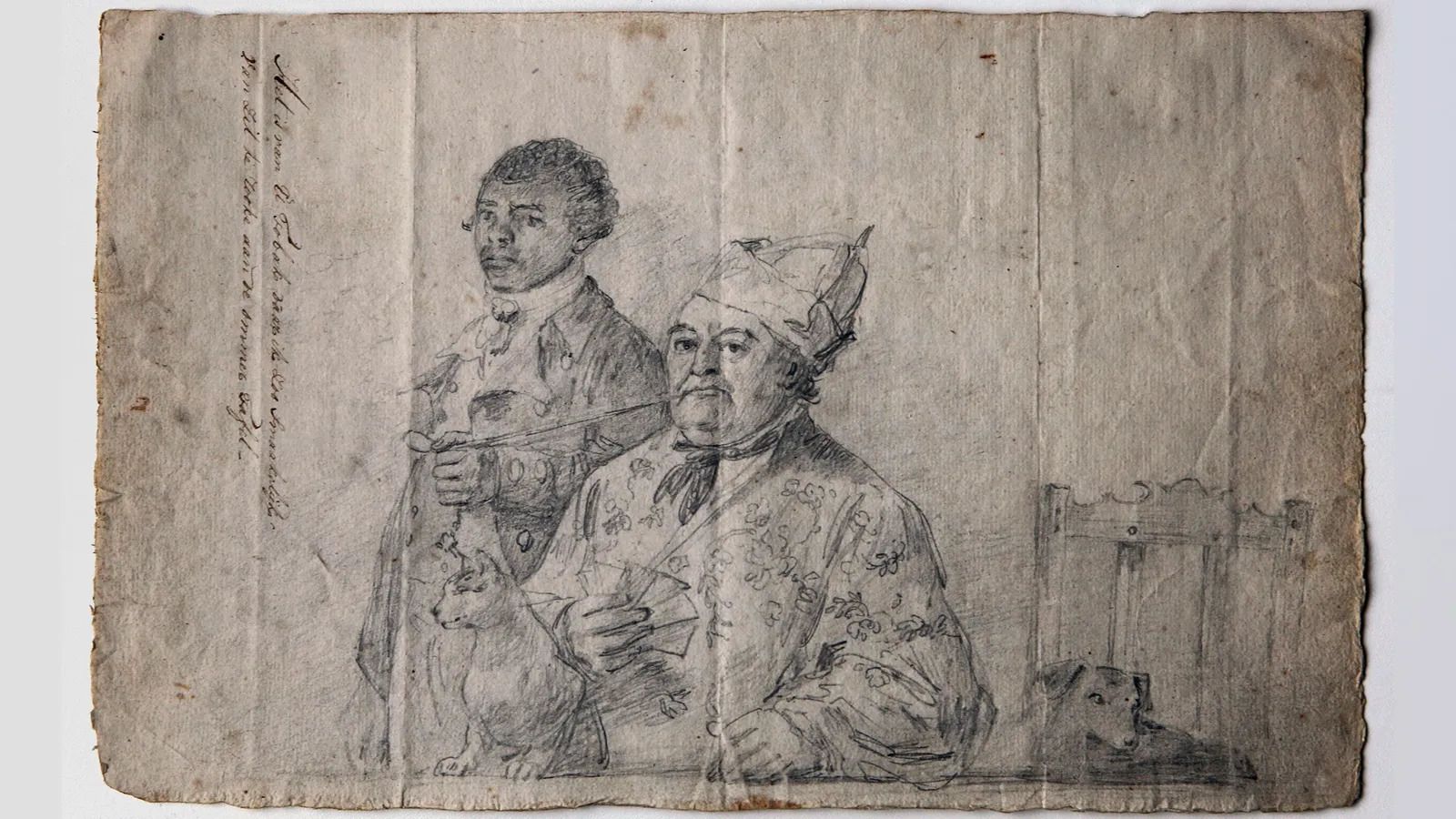 Augustus van Bengalen holding Hendrik Cloete’s pipe - the exhibition
focuses on the social side of slavery in order to tell the stories of
real people
Augustus van Bengalen holding Hendrik Cloete’s pipe - the exhibition
focuses on the social side of slavery in order to tell the stories of
real people
Museums too have had an undue impact on what van Stipriian calls "our mental heritage." "All these collections are representative of a very Eurocentric, very biased view of history, a history of white 'superiority' and black 'inferiority'."
To understand the insidious influence of these narratives you only have to look at the annual Saint Nicholas Day parades, where white men and women appear in blackface make up as Zwarte Piet (Black Peter). According to Van Stipriann, for decades the Dutch have convinced themselves that "we can't be racist because we're tolerant… it's just a joke, it's our tradition," she says. But attitudes are beginning to change. A nationwide debate on Zwarte Piet began in 2011 after two young Afro-Dutch artist/activists, Quinsy Gario and Jerry Afriye, wore t-shirts saying "Zwarte Piet is Racism" during the parade in Dordrecht, and last year a survey found that 50% of people were in favour of changing the character into something else entirely. "Changing the view of half the population in 10 years… in Dutch conditions, that's fast," says Van Stipriaan.
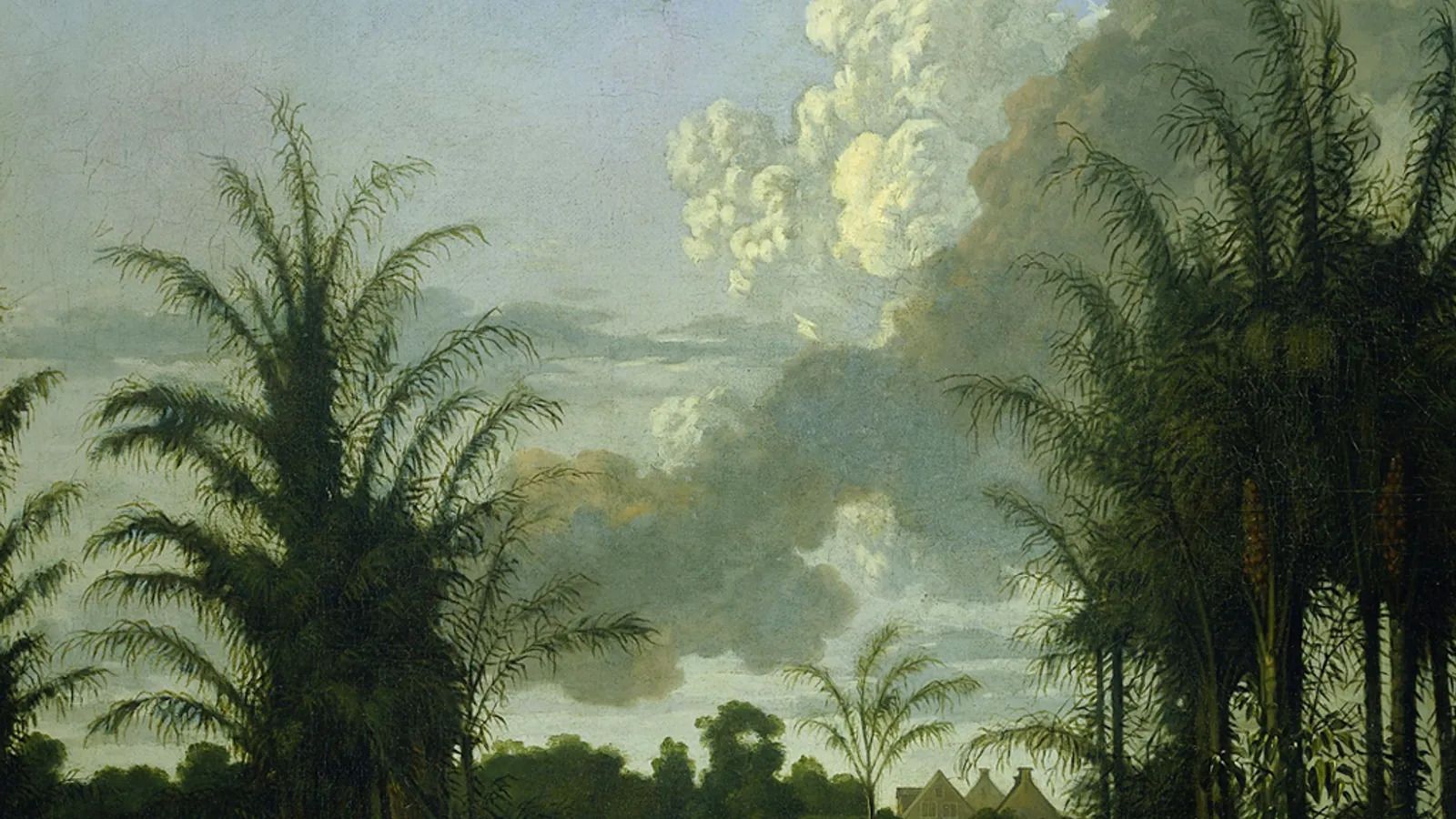 A Dirk Valkenburg painting of a plantation, 1707 – the museum hopes that
this exhibition will change narratives about the Netherlands' colonial
past
A Dirk Valkenburg painting of a plantation, 1707 – the museum hopes that
this exhibition will change narratives about the Netherlands' colonial
past
For attitudes to truly change Van Stipriaan believes the history of slavery and colonialism needs to be part of national history. He is currently part of a team working on a National Dutch Trans-Atlantic Slavery Museum, which he believes will be "a landmark in the Netherlands," although it is unlikely to be open before 2030. However, he is keen to stress that "there is a lot of movement, things are changing, maybe not very fast, but they are changing." He sees the appointment of Smeulders – who he supervised for her PhD – as head of history at the Rijksmuseum as part of that change.
Her background undoubtedly makes her uniquely attuned to the challenges. "Embracing what was, and opening up the dialogue about it is the only way to move forward. There is no undoing the past, but we are in charge of the here and now: it is up to us to do better, by recognising it is national history and therefore something that concerns us all," she says.
"Museums in general have a very important task – to present knowledge in a way that touches people, making it so personal that people place themselves in the shoes of people who lived then," she says. "What I sincerely hope we are able to do with this exhibition and our work is to show that any history has all these different sides to it. We as a museum need to present a more complex story that brings all these voices together."











